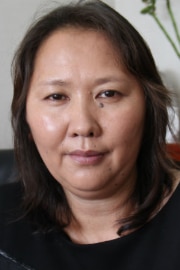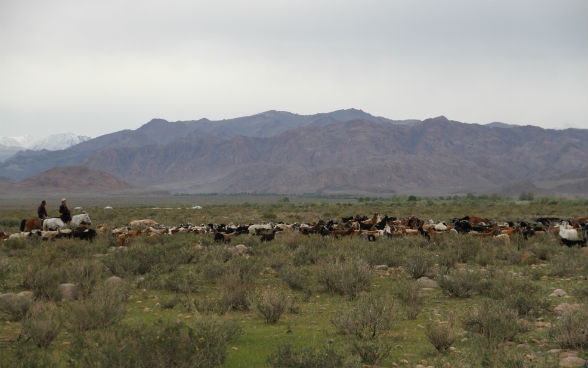
Beginning this year, secondary school students are studying the new core curriculum. Can you elaborate on the purpose and vision of this reform?
Mongolia’s education sector is undergoing great change. We all know that our education system shifted toward a 12-year system from 2009. We’ve changed almost everything - from the curriculum, textbooks, the learning environment and assessment to teacher development and the management of school administrations - in a multi-year plan since the 2012-2013 academic year. Additionally, the Government of Mongolia refined its policy towards education in 2015, and with parliamentary approval we have begun to implement it. This policy focuses on each child’s unique characteristics, shifting from knowledge-based theoretical education towards child-development-based methodology and skills-building based on the students’ needs.
Secondary education reform is focused on discovering each child’s talents and giving teachers the means with which to provide children with life skills, communication and discovery education. Within the scope of secondary-level education, we’re prioritising independent learning, fundamental science education and life-skills learning. However, for high school education, the core curriculum is flexible, fused with future employment and/or further education.
In the 2013-2014 academic year, the primary school curriculum was adopted nationwide. The secondary education curriculum was piloted in the last academic year, and it was being officially introduced this year. The high school curriculum is being piloted.
It takes time to see the results of new things, but preliminary results show that children are becoming more open towards their teachers, more independent and more creative. Children will adopt a proactive attitude of participating in activities and a learning-by-doing approach.
How does this innovation tie in with Sustainable Development Education (ESD)?
In accordance with the “Ecological Education” national programme launched by the Government of Mongolia in 1997, the ESD guidelines encompass coexisting with nature, protecting and improving nature, learning healthy lifestyles and natural resource management, and appreciating natural beauty. When this was approved, the entire education system began having an ecology class from 1998. The General Education Standards approved in 2005 incorporated ESD concepts, but it was only in 2009 when the system shifted to 12 years that ESD lessons were included. When we conducted a baseline survey in the 2013-2014 academic year to measure the impact of this inclusion, the results showed that although natural science lessons had developed its content, the methodology of teachers and the application by students were insufficient. Irrespective of how sound the curriculum and the content appeared, effectiveness was low when it was delivered. This demonstrated to us the importance of first educating the teachers who transfer the knowledge.
Secondly, the survey revealed to us the importance of enhancing students’ textbooks. Using this lead, our ministry and the SDC are implementing a new project and partnering with some civil society organisations. The project has been greenlighted and we’re at the peak of operation.
Mongolians have a long tradition of protecting nature. By building on this legacy with ecologically positive attitudes and values for young generations, we can build a new culture. The fact that such a culture has economic significance is the main justification of ESD.
How are you collaborating with the MEGDT on this?
Our objectives and the final vision are the same. We’re working from two ends to reach one goal. With the MECS, we’re delivering ESD through formal education, whereas with the MEGDT, our target group is different. With them, we are reaching citizens and local organisations through informal education and contributing to green development and a green economy. Thus, both ministries are cooperating and are striving to cultivate green development attitudes within every Mongolian.
Thank you.

